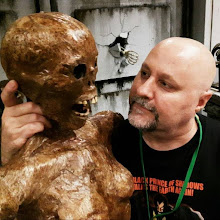In 1975, Radu Florescu published In Search of Frankenstein, which explores the history and science behind Mary Shelley's classic novel, and the possible real-life inspiration for the character Victor Frankenstein. It's well-known that Shelley was inspired to write Frankenstein after she dreamt about a scientist who created life. Florescu postulates that the dream was triggered by the memory of a trip that Shelley took to Germany a few years earlier, when she may have heard about an actual Castle Frankenstein, atop the Odenwald mountain range, which was once the home of a controversial theologist and alchemist named Johann Conrad Dippel (1673-1734).
 |
| Castle Frankenstein |
The idea was contentious at the time, and remains so to this day. There's no question that Shelley traveled the countryside near the castle, which was built sometime before 1250 and was the home of several generations of Frankensteins, but she never directly mentioned visiting that location. Florescu speculated that, while on the trip, there was a good chance that Shelley had heard stories about the infamous Dippel, who was born at the castle after the last of the Frankensteins had lived there.
Dippel later adopted their surname, studied alchemy, and took part in several controversial experiments--one of which may have involved attempting a soul transference between cadavers. He also created Dippel's Oil, an "elixir of life" that was in reality a nitrogenous by-product of animal bones (and is still sometimes used today). If nothing else, Dippel was known to have frequently dissected animals.
 |
| Johann Conrad Dippel |
As well as the history of Dippel and Castle Frankenstein, Florescu explores Mary Shelley's life, her relationship with Percy Shelley, and their larger circle of friends that included Lord Byron and his physician, John Polidori. This of course includes a discussion of that fateful trip to Villa Diodati near Lake Geneva, where they challenged each other to write a horror story. Florescu also notes the publication history of Frankenstein, and other possible influences that Shelley may have had.
 |
| Engraving of the Monster from the 1831 edition |
31 Days of Horror (2014 Edition) continues tomorrow...








0 comments:
Post a Comment